-
Blast gauge gives medics, doctors critical information
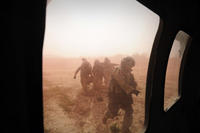
Researchers are working to enhance the safety of soldiers in the field through the development of a device that monitors the physical impacts of exposure to an explosive blast; 188,270 service members have suffered a traumatic brain injury in the last decade; the extent of injury is often difficult to discern, making diagnosis and selection of appropriate medical treatment challenging
-
-
How smartphones are fighting floods
A new smartphone app is helping the Army Corps of Engineers to strengthen its levees and fight floods in Kansas;filing reports is as simple as using a smartphone to take a picture, adding a note, and uploading the information to a database, which only takes a few seconds; this new system helps reduce the time it takes to gather critical information about levees by as much as thirty-six hours, giving engineers valuable additional time to detect and save a failing levee
-
-
Averting bridge disasters: new sensors could save hundreds of lives
One of every four U.S. highway bridges has known structural problems or exceeded its intended life-span. Most only get inspected once every one or two years; University of Maryland researcher has developed a new sensor that measures indicators of a bridge’s structural health, such as strain, vibration, flexibility, and development of metal cracks; the sensors are expected to last more than a decade, with each costing about $20
-
-
New software to improve explosive detection
New software developed by Peaklet Analysis with the aid of a Western Kentucky University (WKU) math professor could help existing explosives detectors improve their detection abilities
-
-
New invisibility cloak conceals objects from human view
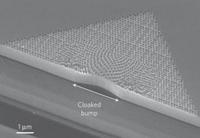
For the first time, scientists have devised an invisibility cloak material that hides objects from detection using light that is visible to humans; the new “carpet cloak” works by concealing an object under layers of silicon oxide and silicon nitride etched in a special pattern, and bending light waves away from the bump that the object makes, so that the cloak appears flat and smooth like a normal mirror
-
-
Transforming acids into bases
Chemists at the University of California, Riverside have accomplished in the lab what until now was considered impossible: transform a family of compounds which are acids into bases; the research offers vast family of new catalysts for use in drug discovery, biotechnology
-
-
California universities prepare homeland security leaders of tomorrow
Fresno State University in California is readying itself for the launch of a new bachelor’s degree program that prepares students for careers in homeland security and emergency management; the program is part of a broader effort by California State University (CSU) leaders as well as local and state officials to boost the state’s security by training more professionals to enter a field that is facing shortages of qualified workers
-
-
Tiny flying machines revolutionize surveillance work
Tiny aerial vehicles are being developed with innovative flapping wings based on those of real-life insects; incorporating micro-cameras, these revolutionary insect-size vehicles will be suitable for many different purposes ranging from helping in emergency situations considered too dangerous for people to enter, to covert military surveillance missions
-
-
Micro-robots emulate water-striding insects
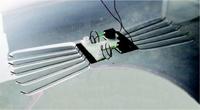
Researchers are working on building nimble micro-robots that are able to skim across the surface of water; the prototype devices emulate water-striding insects such as mosquitoes and water spiders, and could be used for military spy missions, water-pollution monitoring, and other applications
-
-
Designing a more effective crystal ball
A new model for crowdsourcing predictions called Aggregative Contingent Estimation System (ACES) is transforming the way future events are forecast — combining the collective knowledge of many individual opinions in a unique way that improves accuracy beyond what any one person or small group of experts could provide
-
-
The world’s first "printed" aircraft flies
Engineers have designed and flown the world’s first “printed” aircraft, which could revolutionize the economics of aircraft design; the plane is a UAV whose entire structure has been printed, including wings, integral control surfaces, and access hatches; it was printed on an EOS EOSINT P730 nylon laser sintering machine, which fabricates plastic or metal objects, building up the item layer by layer
-
-
Auto theft going extinct?

Thanks to aggressive police work and new technology car theft could eventually become an obsolete problem; new technological developments like high-tech keys, immobilizer systems, and GPS tracking have made it increasingly difficult for thieves to successfully steal cars; new police tactics and technologies like bait cars and license plate scanners have given law enforcement agencies the edge in tracking down stolen cars and catching thieves
-
-
Sensing "skin" protects concrete structures
Scientists have developed a sensing “skin” which is made of stretchy thermoplastic elastomer mixed with titanium dioxde; patches of the skin are painted with black carbon to measure changes in the electrical charge of the skin; the skin will be rolled out in patches across structures such as bridges and dams; the formation of a crack would cause a movement in the concrete under the patch, which would change the capacitance, or stored energy, of the skin; daily check by computers would detect the change the capacitance, and issue and alert
-
-
Texas A&M launches a blimp program
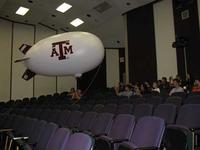
Texas A&M is launching a new airship program to develop lighter-than-air (LTA) blimps; LTA systems generate lift force by using sufficient volume of a lighter-than-air gas, such as helium; heavier-than-air (HTA) systems, on the other hand, generate lift by a relative motion between the wings or rotor blades and ambient air; airships can contribute to a number of missions including disaster response, homeland security, and communications relay
-
-
New fingermarks detection technology
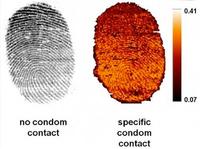
The new technology uses Matrix Assisted Laser Desorption Ionization Mass Spectrometry Imaging (MALDI-MSI) to provide crime scene investigators with key extra details about suspects; these details, such as any substances they might have touched, can provide crucial background information in a criminal investigation
-
More headlines
The long view
New Technology is Keeping the Skies Safe
DHS S&T Baggage, Cargo, and People Screening (BCP) Program develops state-of-the-art screening solutions to help secure airspace, communities, and borders
Factories First: Winning the Drone War Before It Starts
Wars are won by factories before they are won on the battlefield,Martin C. Feldmann writes, noting that the United States lacks the manufacturing depth for the coming drone age. Rectifying this situation “will take far more than procurement tweaks,” Feldmann writes. “It demands a national-level, wartime-scale industrial mobilization.”
How Artificial General Intelligence Could Affect the Rise and Fall of Nations
Visions for potential AGI futures: A new report from RAND aims to stimulate thinking among policymakers about possible impacts of the development of artificial general intelligence (AGI) on geopolitics and the world order.
Smaller Nuclear Reactors Spark Renewed Interest in a Once-Shunned Energy Source
In the past two years, half the states have taken action to promote nuclear power, from creating nuclear task forces to integrating nuclear into long-term energy plans.
Keeping the Lights on with Nuclear Waste: Radiochemistry Transforms Nuclear Waste into Strategic Materials
How UNLV radiochemistry is pioneering the future of energy in the Southwest by salvaging strategic materials from nuclear dumps –and making it safe.
Model Predicts Long-Term Effects of Nuclear Waste on Underground Disposal Systems
The simulations matched results from an underground lab experiment in Switzerland, suggesting modeling could be used to validate the safety of nuclear disposal sites.
